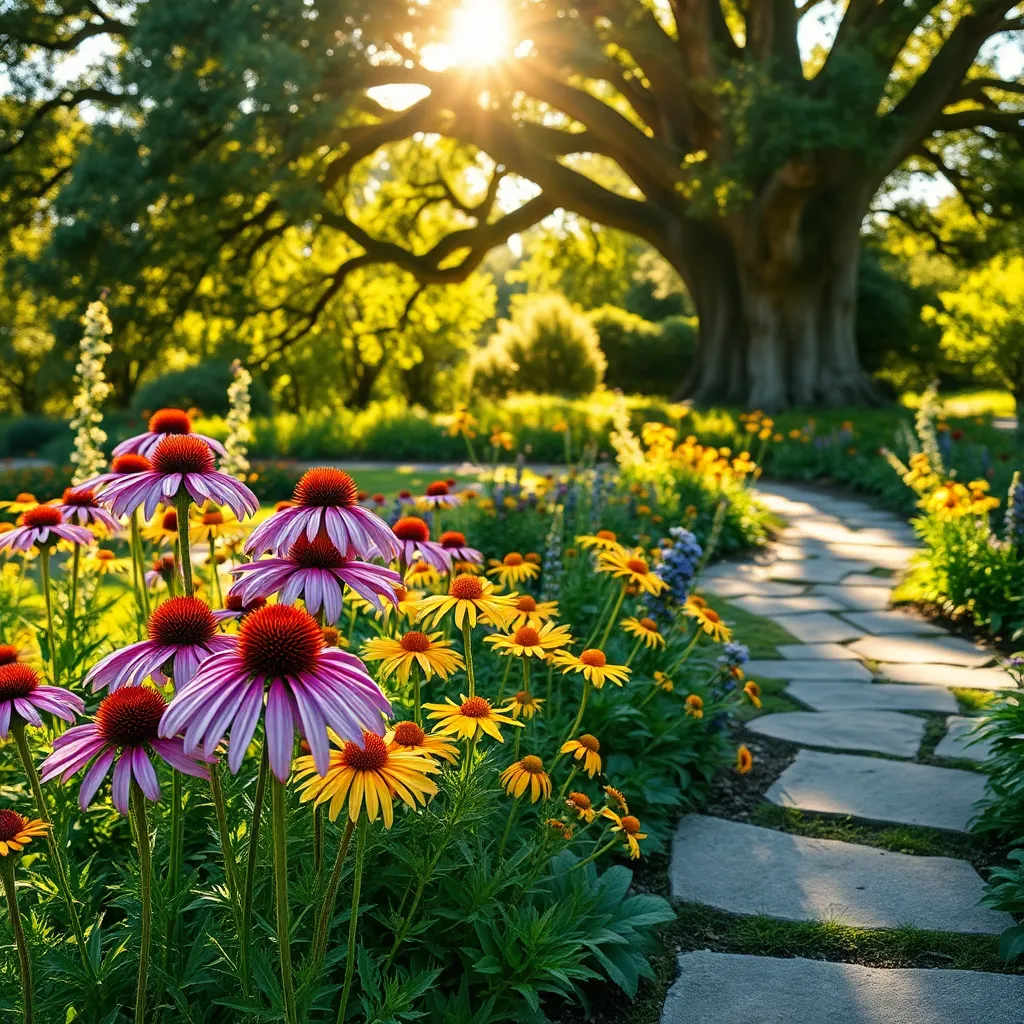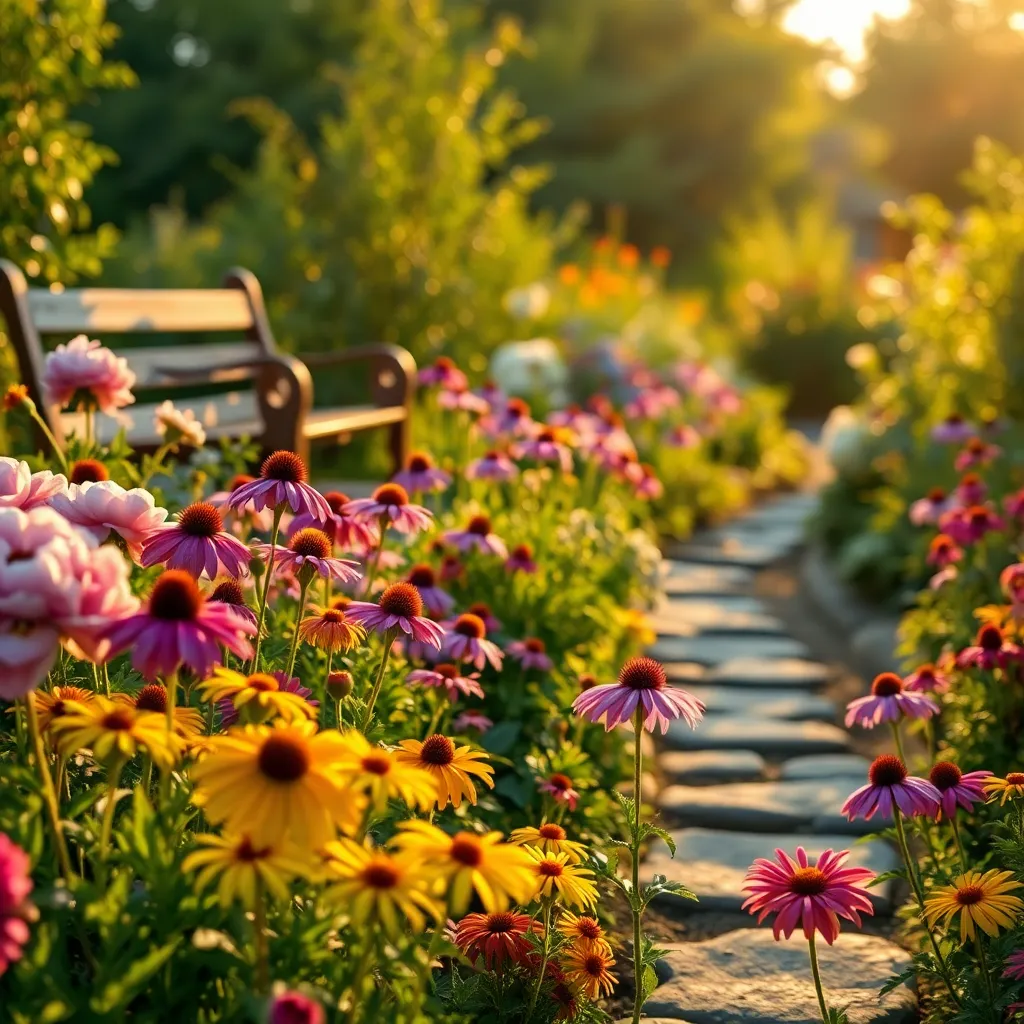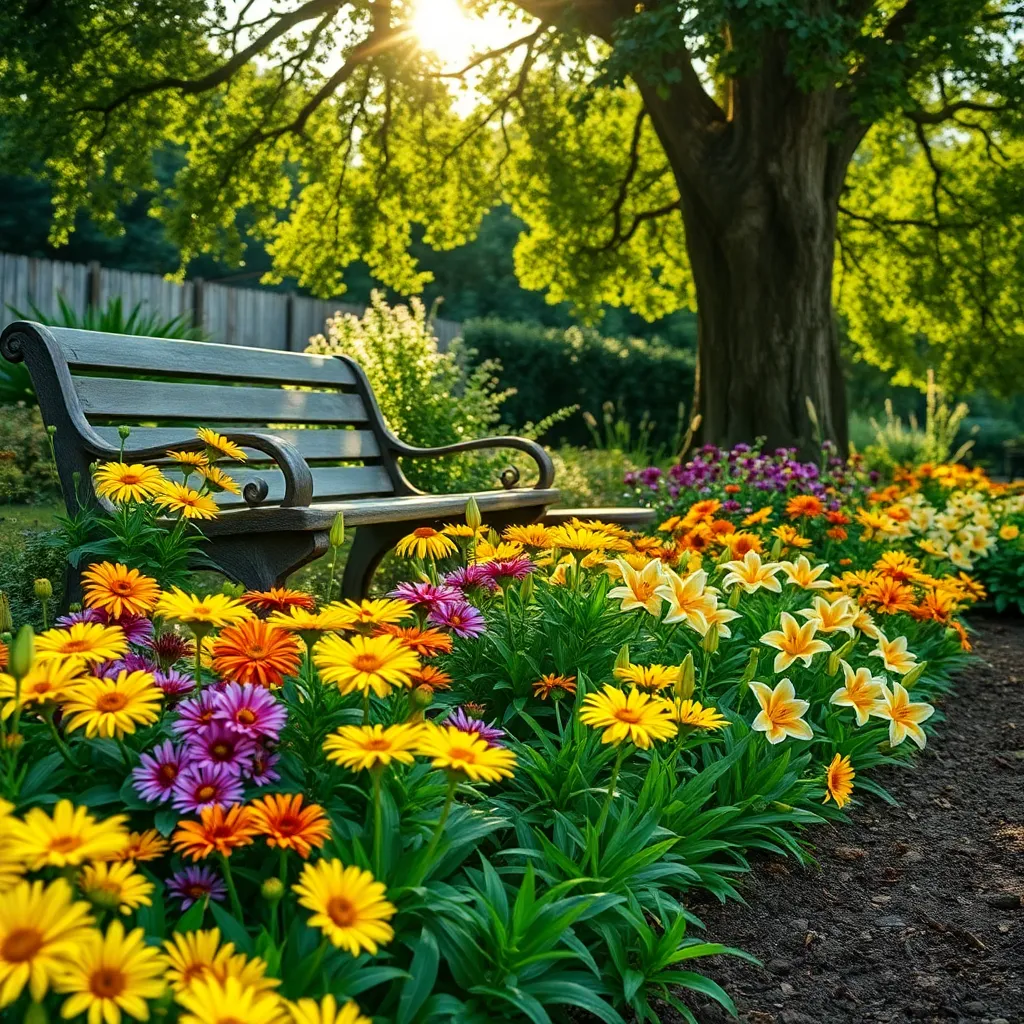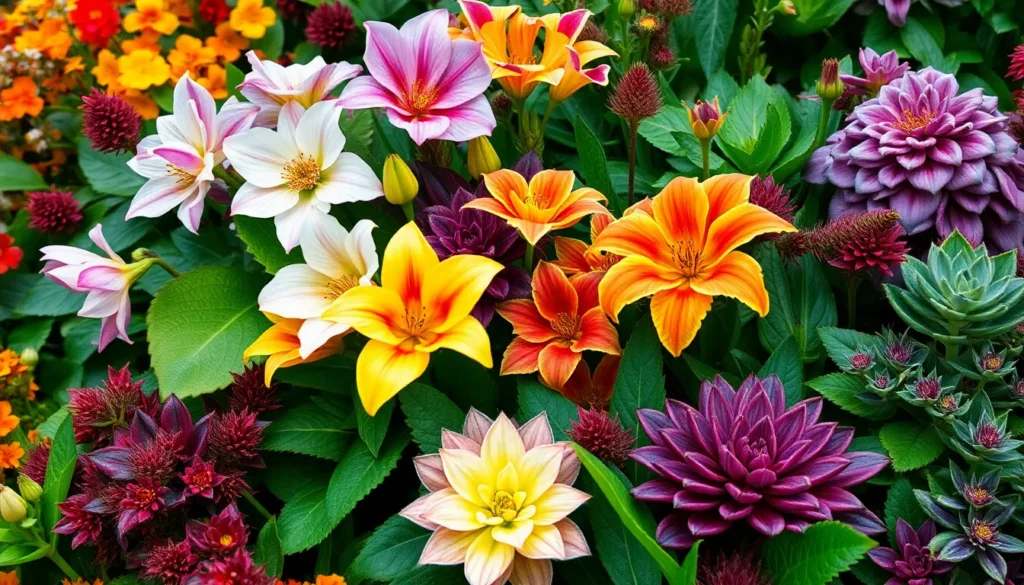In the realm of gardening, few pursuits are more rewarding than cultivating a garden that bursts with color and life all year long. Whether you’re just starting out with your first flower bed or have decades of dirt under your fingernails, the idea of a garden that never takes a break from blooming is universally appealing. Perennials that bloom throughout the year can transform your garden into a vibrant oasis, providing continuous joy and beauty without the need for constant replanting. These resilient plants not only offer aesthetic pleasure but also create a dynamic ecosystem that supports pollinators and enhances biodiversity.
Understanding which perennials can thrive through the seasons is key, and that’s precisely what we aim to explore in this guide. We’ll delve into a selection of hardy, colorful perennials that can grace your garden with their presence from January through December. You’ll discover how to choose plants that suit your climate and soil conditions, ensuring they flourish with minimal fuss. Whether you’re looking to fill a sunny border or add interest to a shaded corner, there’s a perennial out there ready to meet your needs.
As we journey through the world of perennial blooms, you’ll gain insights into planting techniques, care tips, and creative combinations that can elevate your garden’s appeal. We’ll also share expert advice on how to keep these plants healthy and vibrant, so you can enjoy the fruits of your labor all year round. So grab your gardening gloves and prepare to create a garden that not only looks stunning but also nurtures your soul with its unending beauty.
Understanding Perennial Growth Cycles

Perennials are plants that live for more than two years, undergoing a unique cycle of growth and dormancy. Understanding their growth cycles is crucial for achieving blooms throughout the year, even with plants known for seasonal flowering.
One key to maximizing perennial blooms is recognizing the period when each plant naturally flourishes. For instance, some perennials like the Hardy Geranium can be encouraged to bloom multiple times with deadheading and proper care.
To ensure continuous blooms, it’s essential to select a variety of perennials that stagger their flowering times. By planting a mix of early, mid, and late-season bloomers, your garden can maintain vibrant color all year.
Pay attention to the specific needs of each perennial, such as sunlight, soil conditions, and watering requirements. Most perennials thrive in well-drained soil with moderate watering; however, some, like the Daylily, are more drought-tolerant.
Advanced gardeners can extend the blooming season by employing techniques like division and fertilization. Dividing perennials every few years can invigorate plants and lead to more prolific flowering.
- Choose a balanced fertilizer and apply it in early spring to stimulate growth.
- Monitor soil moisture closely, adjusting watering practices based on rainfall and temperature.
Top Year-Round Blooming Varieties

For gardeners seeking year-round blooms, some varieties are particularly reliable and rewarding. Geranium Rozanne, a favorite among perennials, is known for its vibrant blue flowers that persist from spring through fall. To encourage continuous blooms, deadhead spent flowers regularly and ensure the plant receives full sun to partial shade. These geraniums thrive in well-drained soil, making them an excellent choice for borders and containers.
Another perennial that offers year-round interest is the Lantana, which is celebrated for its clusters of brightly colored flowers. This plant is drought-tolerant and thrives in hot, sunny locations, making it perfect for xeriscaping. Regular pruning will promote a bushier growth habit and more prolific blooming. For best results, plant lantanas in a sandy or loamy soil mix with good drainage to prevent root rot.
For shade garden enthusiasts, Helleborus, or the Christmas Rose, is an exceptional choice, blooming even in the chill of winter. These perennials prefer rich, well-drained soil and are best planted under deciduous trees where they can enjoy dappled light. Mulching helps conserve moisture and protect their shallow roots from temperature fluctuations. Hellebores benefit from a slow-release fertilizer in early spring to support their long blooming period.
Salvia offers another option for year-round color with its spiky flowers and aromatic foliage. This hardy perennial thrives in full sun and requires minimal watering once established, making it ideal for low-maintenance gardens. Cutting back the plants after the first bloom encourages a second wave of flowers. Salvia also attracts pollinators, adding biodiversity to your garden while providing continuous visual appeal.
Ideal Climate for Continuous Blooms

When aiming for continuous blooms, selecting the right climate is crucial for perennial success. Perennials thrive in climates with mild winters and moderate summers, where they can sustain growth without extreme weather disruptions.
One effective strategy is to choose plants that are naturally suited to your local climate, which reduces stress and enhances blooming. For example, in temperate zones, consider perennials like the hardy geranium, which flourishes with adequate sunlight and well-drained soil.
To ensure year-round blooms, pay attention to the microclimates within your garden, such as areas that receive more sun or are sheltered from winds. By planting strategically, you can create conditions that prolong blooming periods, even in cooler months.
Incorporating a diverse mix of perennials that bloom at different times can ensure continuous color in your garden. Combine early bloomers like hellebores with late bloomers like asters for a seamless transition from season to season.
- Choose soil that retains moisture yet drains well to prevent root rot.
- Water deeply but infrequently to encourage strong root systems.
- Mulch around plants to maintain soil temperature and moisture levels.
- Regularly deadhead spent blooms to encourage new growth and prolong flowering.
For more advanced gardeners, consider using row covers or cloches to extend the growing season and protect delicate perennials. This technique can be especially useful in regions with unexpected frosts or cold snaps.
Maintenance Tips for Perennial Gardens

Maintaining a perennial garden requires regular attention to ensure vibrant, year-round blooms. Begin by implementing a consistent watering schedule, typically once a week, ensuring the soil remains evenly moist but not waterlogged.
Mulching is crucial for retaining soil moisture and suppressing weeds. Apply a 2- to 3-inch layer of organic mulch, such as shredded bark or straw, around the base of your plants, leaving some space around the stems to prevent rot.
Deadheading spent flowers encourages new blooms and prevents plants from going to seed prematurely. Regularly inspect your perennials and use clean, sharp scissors to remove faded flowers just above the next set of leaves.
It’s important to fertilize your perennials to support their continuous growth and flowering. Use a balanced, slow-release fertilizer in early spring, and repeat the application in mid-summer for optimal results.
For advanced gardeners, dividing perennials every 2 to 3 years can rejuvenate plants and prevent overcrowding. To divide, carefully dig up the plant, separate the root clumps with a sharp spade, and replant them at the same depth in well-amended soil.
Regularly check for pests and diseases, which can hinder your garden’s performance. Employ organic methods such as neem oil sprays or introduce beneficial insects like ladybugs to control aphid populations.
Common Challenges and Solutions

One common challenge with perennials that bloom all year long is ensuring they receive adequate sunlight. Most flowering perennials thrive in full to partial sunlight, so it’s important to position them where they can soak up at least six hours of sun each day.
Overwatering is another issue gardeners might face, especially in regions with high rainfall. It’s crucial to plant perennials in well-draining soil to prevent root rot, and consider raised beds or amending heavy soils with sand or organic matter for improved drainage.
Pest control can be daunting, but a few simple strategies can help keep your plants healthy. Introducing beneficial insects like ladybugs and using organic deterrents such as neem oil can effectively manage common pests without harming the environment.
For those encountering nutrient deficiencies, regular soil testing can be an invaluable tool. Based on the results, amending the soil with the appropriate fertilizers or organic compost can provide the necessary nutrients, ensuring vibrant and continuous blooms.
Conclusion: Growing Success with These Plants
In “Perennials That Bloom All Year Long,” we’ve explored five essential relationship concepts that ensure lasting connection and growth. First, we delved into the importance of consistent communication, the bedrock of understanding and empathy. Next, we highlighted the art of appreciation, where recognizing and valuing your partner’s contributions fosters mutual respect. Third, we discussed conflict resolution, emphasizing the power of addressing disagreements constructively. Fourth, we examined the role of shared goals, aligning your paths to strengthen your bond. Lastly, we considered the necessity of self-care, understanding that nurturing oneself is integral to nurturing your relationship.
Now, take a moment to reflect on these principles and choose one to focus on today. Perhaps it’s a heartfelt conversation or a small act of appreciation. Your journey toward a thriving relationship begins with this single step.
Remember, relationships are ever-evolving gardens that require ongoing attention. Bookmark this article as a resource to revisit these concepts and continue your growth together. As you implement these strategies, envision a future where your relationship blooms with resilience and joy, thriving through every season. Let this be your guide to cultivating love that stands the test of time.







